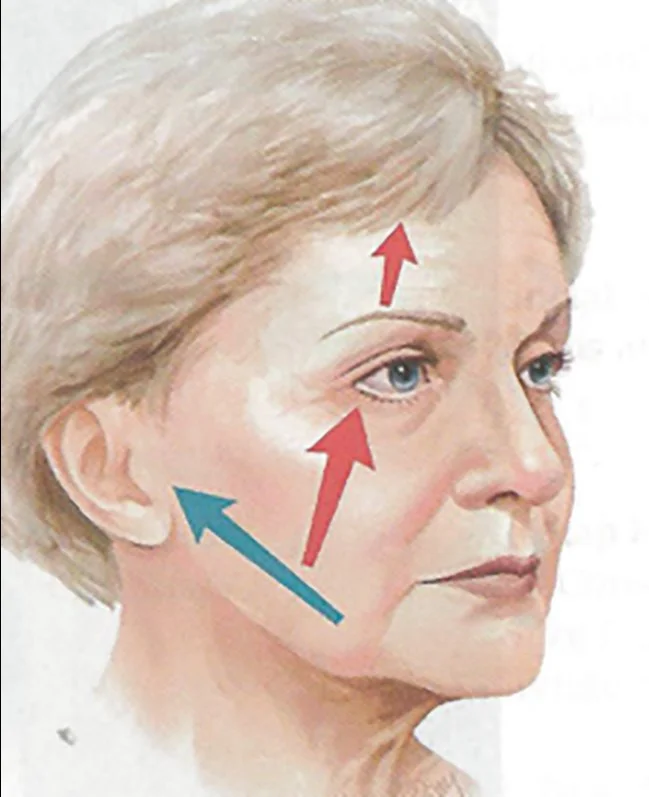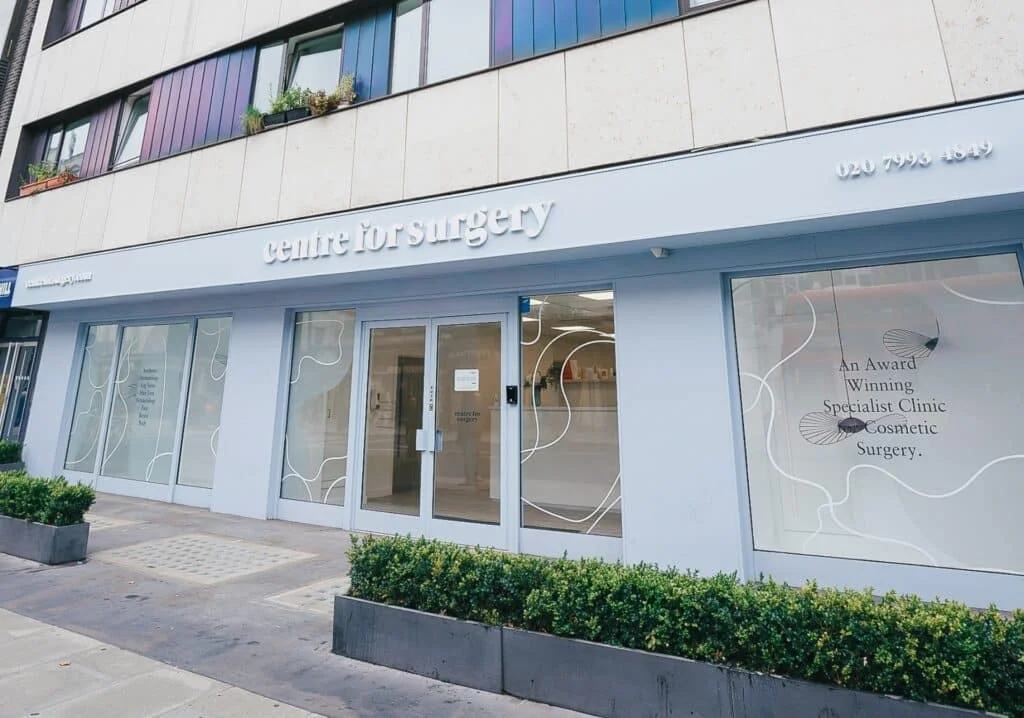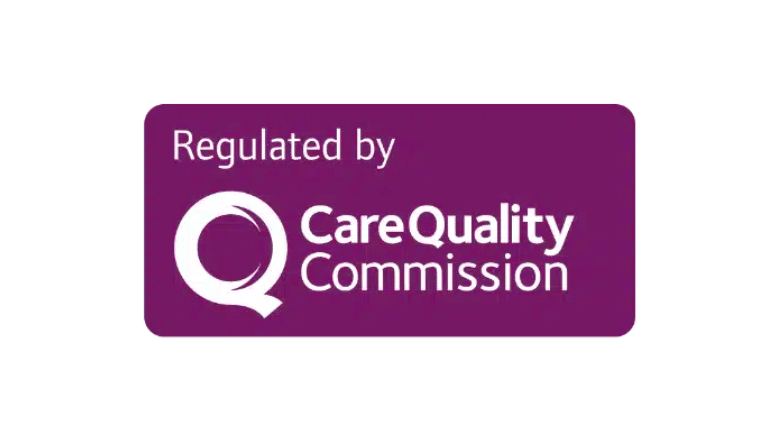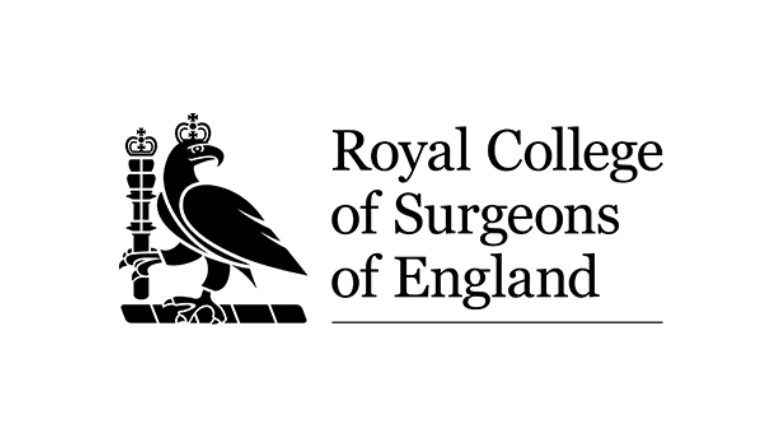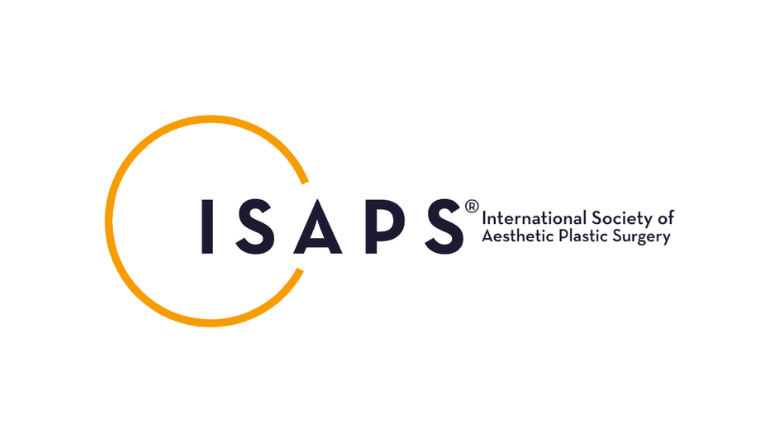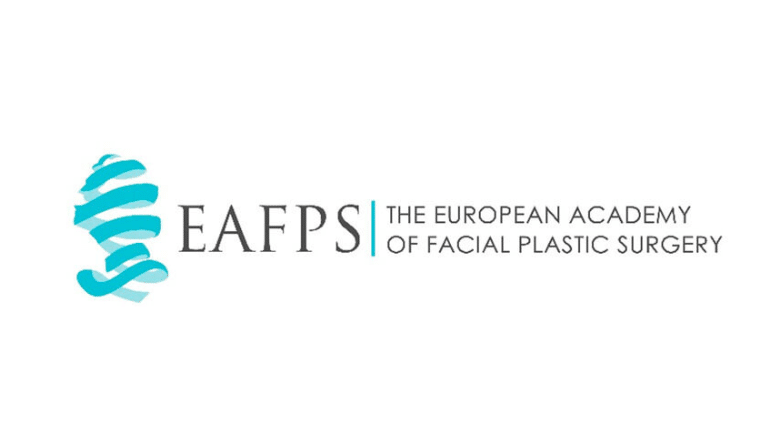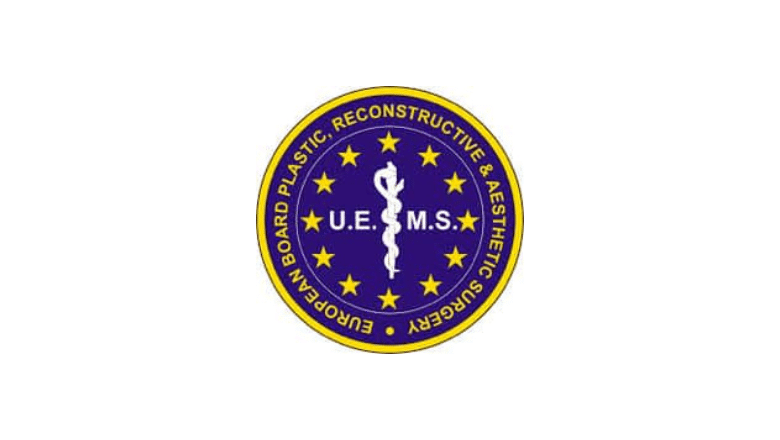A facelift is also known as a rhytidectomy. A facelift is a procedure which removes or reduces the appearance of skin laxity on the face. This surgical procedure improves the signs of ageing around the face and neck. It will help to remove any deep creases or wrinkles on the face. Other procedures, such as eyelid surgery or a brow lift, are also used in conjunction with facelift surgery to give a more youthful look.
RELATED: History of Facelift Surgery
What can a Facelift achieve?
The expected results of a facelift procedure can vary depending on the individual patient but generally include the following:
Improved Facial Contours
A facelift can improve the contours of the face, giving it a more youthful and refreshed appearance. The procedure can lift and reposition the cheeks and jowls, which can help to smooth out wrinkles and fine lines.
Tightened Skin
A facelift can remove excess skin and tighten the remaining skin, which can help to improve the appearance of the face and neck. This can help to reduce the appearance of wrinkles and fine lines and can also help to improve the definition of the jawline and neck.
Reduced Sagging
A facelift can address sagging skin in the mid-face, jawline, and neck. This can help to reduce the appearance of sagging jowls and a “turkey neck” and can also help to improve the overall shape of the face and neck.
Long-lasting Results
The results of a facelift can last for several years, depending on the individual’s age, skin condition and overall health. The procedure can provide a long-term solution for addressing the signs of ageing.
Will a Facelift Make Me Look Younger?
A facelift is designed to create a more youthful appearance by reducing visible signs of ageing on the face and neck. This procedure can effectively address issues such as sagging skin, deep creases, jowls, and loose skin around the neck.
A facelift can significantly enhance facial contours and create a smoother, more youthful look by tightening underlying muscles, removing excess fat, and redistributing skin. Many patients find that a facelift helps them look several years younger, boosting their confidence and overall satisfaction with their appearance.
However, the extent of rejuvenation varies from person to person. Factors such as skin elasticity, bone structure, and overall health are crucial in the results. Maintaining realistic expectations is also essential; while a facelift can produce dramatic improvements, it cannot halt the ageing process entirely.
What is a Composite Facelift?
The composite facelift builds upon the SMAS plication facelift in several ways. It is regarded as a composite technique combining two key aspects of addressing gravitational changes to restore youthfulness to the face. A composite facelift is still a two-layered technique like a SMAS lift, but the key difference lies in the additional vertical upward vector that a composite facelift can achieve. A composite facelift addresses all the traditional areas of an SMAS facelift, such as the jowl area, cheeks and neck, but also includes rejuvenation of the periocular region.

The composite facelift has both horizontal and vertical components. The downtime after a composite facelift is slightly longer than a SMAS facelift with a longer duration of postoperative swelling. There is also a slight increase in the risk of postoperative complications.
How is a facelift performed?
First, your surgeon may recommend either local or general anaesthetic. A local anaesthetic is used to numb the area to be treated. This means the patient will be awake during the procedure but will not feel anything. A general anaesthetic ensures the patient is fully unconscious during the procedure. For women, the surgeon will then create an incision in the temple area just in front of the ear. This incision will continue to the back of your ears down until your earlobes are near the hairline. For men, the surgeon will create the incisions to follow the natural beard lines to create a natural look. The skin will be lifted carefully so the surgeon can remove any connective tissue and muscle. Fat and excess saggy skin may also be removed at this point. Once the excess skin is removed, the surgeon will close the wound with sutures. This surgery can take from two to four hours to complete.
What is the recovery like after a facelift?
After a facelift procedure, nearly all patients experience minimal pain. The surgeon should prescribe medications such as antibiotics and pain medication. Swelling and bruising within moderation are unavoidable as the skin and muscles are being disrupted. However, the swelling should be reduced using a cold or hot compress. The patient should return to the surgeon within two days to get the dressings removed or replaced and check the healing process. The patient should avoid strenuous activities for at least two weeks to ensure the wound is healing properly. Shaving the area should also be avoided. Scarring should be undetectable due to the area in which it is placed; however, if it is noticeable, it will fade over a short period of time.
RELATED: Facelift Recovery – Top Tips For Quicker Healing
What can a facelift not achieve?
The facelift procedure is used to reverse the signs of ageing, but it cannot stop natural ageing. After you have undergone a rhytidectomy, your skin will start to age again. This is because ageing is completely natural, and there is no way to prevent it fully. Fillers and anti-wrinkle injections can be used to slow down the ageing process; however, they do not stop them, and they are only temporary. A facelift is only effective if it is done surgically.
Contact Centre for Surgery to Book a Facelift Consultation
Are you considering a facelift to rejuvenate your appearance and achieve a more youthful look? Centre for Surgery is here to help. Our team of experienced plastic surgeons specialises in facelift procedures, offering personalised care and exceptional results tailored to your unique needs.
About Us
At Centre for Surgery, we pride ourselves on providing top-notch cosmetic surgery services in the heart of London. Our clinic, located at 95-97 Baker Street, London W1U 6RN, is equipped with state-of-the-art facilities and staffed by a team of highly skilled professionals dedicated to your safety and satisfaction.
We understand that choosing to undergo a facelift is a significant decision, and we are committed to guiding you through every step of the process. From your initial consultation to your post-operative care, our focus is on ensuring you feel comfortable, informed, and confident in your choice.
Why Choose Us?
- Expert Surgeons: Our plastic surgeons are highly qualified and experienced in performing facelift procedures, ensuring you receive the highest standard of care.
- Personalised Approach: We tailor our treatments to meet your individual goals and expectations, providing you with a customised surgical plan.
- Comprehensive Care: From your first consultation to your recovery, we offer continuous support and guidance to help you achieve the best possible results.
- State-of-the-Art Facilities: Our clinic is equipped with the latest technology and adheres to the highest safety standards, ensuring a comfortable and secure environment for your surgery.
Book Your Consultation
Take the first step towards a more youthful appearance by booking a facelift consultation with Centre for Surgery. Our friendly and knowledgeable team is ready to answer your questions, discuss your goals, and create a personalised treatment plan tailored to you.
Contact us today to schedule your consultation:
- Phone: 0207 993 4849
- Email: contact@centreforsurgery.com
- Address: 95-97 Baker Street, London W1U 6RN
Explore our website to learn more about our services and read patient testimonials. Let Centre for Surgery help you achieve the rejuvenated appearance you desire with expert care and exceptional results.

